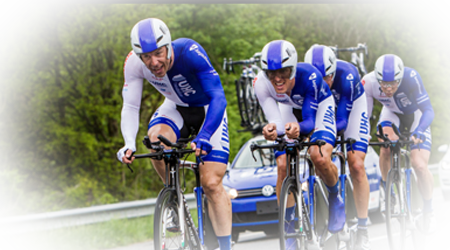Success habits you need for a positive mind-set…
Whether in sport, business or socially, there are some people that you know or have met and they just have an aura of positivity and seemingly everything always goes right for them. They have inner, un-shakeable confidence, they have a great attitude to life, they are constant learners and curious about life and the world, they are infectious with enthusiasm and seem to make things happen. These are high performers in all aspects of life, they excel in everything they do whether it is sports, business, fitness, health, relationships and will take the challenge for everything.
Below are some typical traits, characteristics and success habits that makes the difference depending on what is ‘between the ears, in the mind’ of high and average performers and it is the mind-set that separates them. Successful people think differently, make better decisions, have different habits, see opportunity and take action in ways others don’t.
The good part is, it is all learnable, trainable and achievable to develop this type of winning mindset and minimise the bumps, obstacles and problems, but also when they do occur, knowing and mastering the inner game (the mind game) can help to deal with them much better with a different outlook and mentality.
-
High Performers in teams or business meet challenges head on…
High performers raise their level and intensity when the moment arrives, whereas average performers run away or make up stories and excuses, driven by fear. In fact they deny, blame, justify, complain, whinge and rationalise why things are not going right for them and become a victim of circumstances. These stories that they tell themselves and excuses drive their mentality and state that affect behaviour and can even attract the very circumstances / problems they want to avoid and manifest them it into their lives i.e. they are beaten in the mind before they start with self-defeating and doubts High Performers are able to change state, change the pattern of thinking with new beliefs and move past the problem. Like top elite athletes or teams, they always seem to rise to the big occasion, it’s not luck, it’s the different mindset and mental fortitude they have developed. As the saying goes ‘When the wind of change comes, some people run for the hills, others build windmills’. Which one are you?
-
High Performers rise above problems…
High performers seem to expand, not shrink in their approach to challenges or problems and make themselves bigger to overcome problems. As they say ‘What you focus on expands’. High performers recognise the need to learn, grow and become better, fitter or stronger to make the problem seem small and insignificant i.e. Trekking to Everest base Camp initially seemed like a big problem but once achieved, it seems easy afterwards…this is the same for when you could only run 1km, it was hard initially but now you have run ½ marathons because of a breakthrough, 1km seems insignificant. And one more thing, high performers don’t see problems, they see opportunity. Stop focusing on the size of the problem and focus on the size of you.
-
High Performers play to win, average people play, not to lose…
High performers are modest but competitive, they set stretch goals and strive to do whatever it takes to get there. They play full on at everything and have an unwavering belief about winning and reaching their goal, in fact losing does not even enter their head. On the other hand, average performers are just glad to be in the race or game to take part, and mentally often play the game NOT TO LOSE. The problem is that the mind will focus on and support whatever goal is given to it, either positive or negative so thinking this way will inevitably end as you think it will. Self-fulfilling! Question…do you think Usain Bolt or Rafa Nadal has any thoughts, doubts or fears about losing? Well, they might, from the little voice we all have inside, but they know how to turn off the voice of doubt that tries to keep us safe. Fake it, until you make it.
-
High Performers shoot for the stars but if they don’t reach the stars they will at least hit the moon…
High performers model others who are the best and aim high, have high expectations, aim to raise the bar and beat their own best. However, average people may not even have goals or if they do they don’t even shoot for the tallest house in their city. They set small goals, act small, play a small game, subordinate to others and get what they aim for, small rewards. High Performers see the positives, focus on them and mentally tell themselves it is possible and I can do it.
-
High Performers take a leap of faith, have courage and overcome their inner fears
To grow and develop because they know that breaking out of their safety and comfort zone is what is going to help. They push themselves to their limits and beyond to see what is possible for them because it is at the limits they find out and as they breakthrough the invisible comfort zone that holds them back they raise their level. Average people stay safe, stay secure, don’t take risks or chances because it is comfortable to stay where they are. People who have challenged themselves and performed breakthroughs find it harder to go back to how they were like a piece of plastic stretched, it no longer has the ability to go back.
-
High performers are committed to becoming the best, average people dream, hope and fantasise about being the best…
A key reason people don’t get what they want, is because they don’t know what they want. High performers are totally clear about it and unwavering in their desire and fully committed to getting it i.e. to devote oneself unreservedly with no holding back, giving 100%, never giving up and no excuses. Their vision and intentions are aligned and they follow through, not just to the finish line but through it and beyond. This is the way of the internal warrior, the warrior who battles on. High Performers will sacrifice and do whatever it takes to complete the mission most important to them.
-
High Performers don’t wait for success or reward before they take action…
High Performers don’t say, when I have or get this in my life, then I’ll be able to do that, and then I’ll be this, they get on and create it. Average people are waiting for all the stars to align before taking action i.e. they wait for confidence to show up before they can do something but it doesn’t work that way, confidence is created by doing something. High Performers recognise this and look at it exactly the opposite: “Be, do, have” i.e. “I first need to become the person that I need to be, so I can be able to do whatever it takes to have whatever I want”. The having comes after the doing. You usually have to do before you get to have – and before you can do, you have to become a certain type of individual. Work on the inside you and eventually you will see the improvements on the outside. It’s within you to do anything and reach your potential. However, everyone has potential, the difference is actually reaching it through doing, not talking about it. Nike have it right ‘Just do it’.
-
High Performers see potential growth and focus on reward, average people see potential loss, risk and danger…
High performers take responsibility for their results and act on the mindset of, it will work because I will make it work…action always beats inaction, taking the chance to find out and if nothing else you learn and grow from the experience to move upwards as opposed to never trying and never knowing. Remember, failure will happen and it is falling down that makes us stronger. In fact, failure often comes just before a big success so hang in there…the high performers mindset frames any perceived failures as something that had to happen to get to where they want to go and it is a setback, not a failure. Your perception is your reality.
-
High Performers work hard, very hard to be the best and thrive to get the rewards they want…
Average people work hard too, sometimes harder, but a) there is something they don’t know or figured out yet and b) they lack real belief or confidence, they don’t feel worthy or don’t think they deserve it at a sub-conscious level which affects results because everything on the outside eventually shows on the outside. The mind-set makes a huge difference and the part no one can see is when 2 people receive the same information, learn the same thing but yet will get totally different results.
Average people have a belief that high performers are just lucky, but the difference that makes the difference is in between the ears, the mental cogs and processes and ACTION so it’s not luck, it was manifested, it was created and with belief, success becomes an unstoppable force. High Performers know the harder they work to become the person they need to be, the better their mental toughness and approach will be when the tough times come.
-
High Performers are acting on their highest values to pursue excellence….
They are following their dream, their purpose, their inspiration and fulfilling their greatest values that are congruent in mind and body to fulfill them. Their vision, thoughts and actions are so strong clear and focused that they create an unfair advantage to create a result that is self-fulfilling i.e. the will and expectation of success is so strong that the outcome is positively biased in their favour. With such clarity and positive affirmations and the vision, the goal simply becomes a reality. This is like the person that is told they are destined for greatness. They play this story in their mind, rehearse what this looks like in terms of success and literally make it so because they really believe it. The greatest gift you can give someone is telling them you belief in them.
-
High Performers are willing to act in spite of fear, average people let fear stop them
Fear, doubts and worries grips everyone at some point but the difference is how you overcome it, how you perceive it and what action you take despite feeling these emotions. As the saying goes, smell the fear and do it anyway. High Performers don’t let these feelings stop them, they go through it, around it, over it or under it, whatever it takes. Acting in spite of fear takes practice and courage but like anything, the more you do it the easier it becomes, if you are willing to do only what’s easy, life will be hard but if you are willing to do what’s hard, life will be easy. Start to challenge your own self limiting beliefs, get out of your comfort zone and expand to levels you didn’t think were possible. High performers don’t hold themselves back, and if they get knocked down they get back up because they know that failure is what comes just before success…




